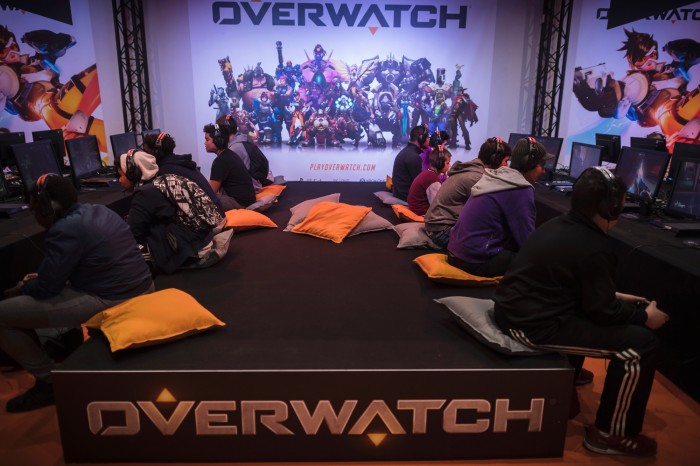Blizzard’s New E-Sports League Looks a Lot like Mainstream Sports
The ascent of e-sports from nerdy niche to massive global spectacle has been impressive to behold. Now a leader in the industry wants to take things to the next level, launching a new venture that will have many of the trappings of a proper professional sports league. Run by Blizzard Entertainment, which has been big into e-sports since the first days of its wildly successful Starcraft series, the new league wouldn’t look out of place being run by the NFL.
Centered on Blizzard’s breakout hit Overwatch, which launched earlier this year, the league marks a break from much of the way e-sports have been formatted during their meteoric rise over the last decade or so.
Instead of letting individuals or clans of players rise to elite levels of gaming and gain sponsorships and prize money along the way, Overwatch League aims to build teams based in cities. And rather than blinking into and out of existence with each season’s performance, those teams—and some of the players—will be around for the long haul, in the hope that fans will develop local allegiances much as they do with traditional sports teams.

This evolution toward institutionalizing e-sports has been going on for a while. Top players have been signed by the likes of English Premier League soccer teams (to play Fifa) and the Philadelphia 76ers (to play Overwatch and League of Legends). This makes sense as a sort of survival tactic for old-guard sports—there’s been some suggestion that the amount of time young people spend watching e-sports is cutting into their consumption of traditional sports.
Blizzard, too, clearly has a lot to gain from being on the leading edge of this trend. Teams in Overwatch League will share revenue generated from media deals, merchandising, and sponsorships with Blizzard. Seasonal events such as an NFL-like player combine, long-term contracts for top talent, and promotion of local teams will no doubt create buzz and help the sport grow—but they also seem tailor-made to boost sales of the game.
This weekend, for example, Blizzard hosted the first-ever Overwatch World Cup. Competition was fierce as teams ascended through the brackets, and the crowd at BlizzCon oohed and aahed behind professional-sounding play-by-play commentary. In the end, team South Korea crushed team Russia in the best-of-seven final, but the excitement from one moment to the next was palpable even to a casual spectator. And of course, right at the bottom of the website for the World Cup was a big button that said “BUY THE GAME.”
(Read more: Polygon, PC Gamer, Reuters, “StarCraft Will Become the Next Big Playground for AI,” “Are E-Sports Eating Up Traditional Sports Viewership?” “For Years, China Felt Awkward About Dominating the Globe in E-Sports")
Keep Reading
Most Popular
Large language models can do jaw-dropping things. But nobody knows exactly why.
And that's a problem. Figuring it out is one of the biggest scientific puzzles of our time and a crucial step towards controlling more powerful future models.
The problem with plug-in hybrids? Their drivers.
Plug-in hybrids are often sold as a transition to EVs, but new data from Europe shows we’re still underestimating the emissions they produce.
Google DeepMind’s new generative model makes Super Mario–like games from scratch
Genie learns how to control games by watching hours and hours of video. It could help train next-gen robots too.
How scientists traced a mysterious covid case back to six toilets
When wastewater surveillance turns into a hunt for a single infected individual, the ethics get tricky.
Stay connected
Get the latest updates from
MIT Technology Review
Discover special offers, top stories, upcoming events, and more.